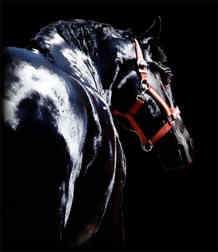
1.
Definition of stress
As with other words, stress is
difficult to describe and measure, being very subjective. Broom (1987) described
stress as referring to some individual’s state of being overloaded.
There is a need to define stress and frustration more accurately and
refine non-invasive techniques for measuring stress hormones like cortisol.
Nyman et al (1996) measured
plasma vasopressin levels as mediating stress response and found that AVP
(arginine vasopressin) had a role in mediating stress responses in the horse.
Stress is an environmental effect on an individual that overtaxes its
control systems and reduces its fitness or appears likely to do so (Broom and
Johnson 1993).
There are three aspects of
stress, the stressors, the individual differences and the stress reactions.
The stressors can be physical e.g. thermal and chemical, but they can
also be defined by the situation e.g. immobilisation and social isolation.
In the stress reaction the hypothalamus and the central nervous system
play an essential role. The
individual difference is the way each animal perceives its environment.
2. Welfare implications
Welfare problems arise when
individuals fail to cope with their environment or when coping is difficult.
The ultimate criterion of what is detrimental is whether individual
fitness is reduced. Ödberg (1987) posed the question; does “coping” warrant
welfare? He also stated that the argument that abnormal behaviour
represents coping mechanisms should not induce us to take welfare for granted
too quickly as:
It is likely that it only
represents the final stage of a distressing process
Little is known about the costs
of coping
Not all individuals in the same
environment are able to develop such mechanisms
Attempts to cope include:
Functioning of body repair
systems
Immunological defences
Emergency physiological responses
And a variety of behavioural
responses
Some researchers have taken the
“stress” or “disruption of biological functioning” approach to defining
poor welfare (Duncan 1996). There
is the paradox that neither the absence of abnormal behaviour like stereotypies,
implies no stress, nor that their presence indicated actual stress.
Stress implies poor welfare (Broom and Johnson 1993) but welfare can be
poor without stress.
Physiological and behavioural
indicators of stress can be used as an index of welfare and provide means of
measuring welfare objectively and quantitatively.
The use of physiological indicators of stress can provide a sound
ethological base upon which the animal welfare legislation and recommendations
of the future can be based.
3. Suffering
Dawkins (1990) described suffering as
occurring when unpleasant subjective feelings are acute or chronic because the
animal is unable to carry out the actions that would normally reduce risks to
life and reproduction in those circumstances. There are some clear links between suffering and welfare.
4. Stress, Welfare and immunology
Ödberg (1987) studied the
relationship between stress and immunology and found that severe and acute
stress may suppress the immune response of the animal involved.
He found stress was associated with some form of neurobiological state of
uncertainty. The immune system in
one way or another listens to the brain, and brain activity on the hypothalamic
level reflects what goes on in the immune system (Ödberg 1987).
Stress comes from not only physical
stressors, inflicting some somatic damage, but also from so called psychological
stressors, inhibiting the performance of essential behaviour programmes.
A large array of environmental conditions may interfere with the
organism’s health (Ödberg 1987) and when changing management regimes and
reducing stress we can expect improvements in disease resistance and possibly
performance.
The same diagram can use measurements
of immune system function, disease condition and hence possible suffering to be
indicators of the level of welfare (taken from Broom and Johnson 1993):

Levels of immunosuppression also
correlate with levels of welfare. Welfare
includes health and therefore indicators of good and poor health are also
indicators of good and poor welfare. Most
research in this area centred on humans. Susceptibility
to disease can be increased by a variety of biological disturbances.
When welfare is good the immune system works effectively to counteract
challenges from pathogens, but if there is immunosuppression the animal will
have to do more to cope with environmental challenges.
5. Stress and stereotypies